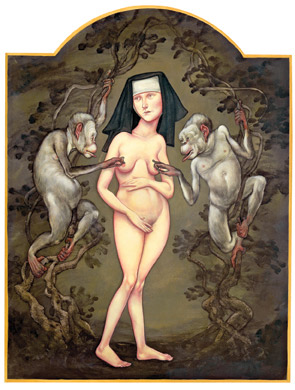It ain’t pretty, but it’s done. I completed a first, rough, provisional, tentative, preliminary draft of chapter one, about 6,000 words that runs from Roman mystery cults to the banning of flagellant companies in the 14th century. It’s far from complete, but it is something I’m ready to show somebody else.
One of the thing I realized was that I had big gaps in my narrative. I spent the last week on a crash study on medieval Christianity, the founding of the great monastic orders and the debates over flagellation and other forms of discipline. The church has never been entirely comfortable with flagellation and other forms of asceticism, perhaps because it makes possible a connection with Christ through the body, and not through established hierarchy of intermediaries.
What’s next is Chapter 2, roughly 1500 (Pico della Mirandola’s discussion of flagellation) to 1700 (the Abbe Boileu’s discussion), the disagreement over how the human body is to be viewed. The starting point is the disagreement over the St. Theresa of Avila and her “transverberation”, her eroticised encounter with an angel that repeatedly stabbed her with a spear. In another time, St. Theresa’s experience, and art depicting it, would have been sacred, but in this time, it could be seen as profane, the result of sexuality perverted by the unnaturalness of convent life.
I may extend it to the trial of Father Girard over his affair with Catherine Cadiere around 1730, but that may be saved for the chapter on sensibility.
I’m not sure that even with a good work habit I can make my deadline of a completed manuscript by the end of October. On the other hand, I have a lot of stuff already done and researched, I just need to put it together and fill in the gaps.




